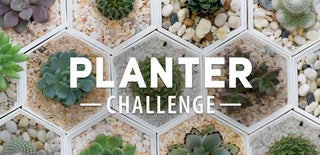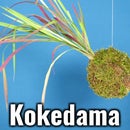Introduction: Basketry Planter 2.0 - Air Plants
This planter is made for Tillandsia also called Air Plants. These plants don't require sitting around in soil or water to survive. They absorb moisture and nutrients through the leaves from rain, dew and dust.
This instructable is mixing some advanced technology with some ancestral methods.
The planter base as been designed on Thinkercad and 3D printed.
Sides are made using basketry weaving.
The top is done using macrame knots.
I hope you enjoyed the video.
Step 1: Design the Base on Thinkercad
The base as been designed on Thinkercad.
It can be downloaded Here
Step 2: Print the Base
The plastic used for printing is a Corn-Based Plastic PLA.
Step 3: Prepare Wicker
Wicker must be immersed into water for one week before using it.
It will make it more flexible and almost unbreakable.
Step 4: Insert Wicker in the Base
Cut on the thickness of some wicker in order to match the size of base holes.
Insert side-stakes wicker inside each holes.
Step 5: Weave Wicker
Side is built up by weaving around the side-stakes.
The weave technique used is called under-and-over-weaving. This is the most commonly used technique and also the simplest.
It consist in weaving the wicker one time under and one time over side-stakes.
Once the wicker is completely weaved, take a new one and continue.
The side-stakes are then folded over and woven into a finishing border.
Step 6: First Macrame Knots
These Knots are called portuguese sennit flat.
You need 6 equal size piece of string.
Use two strings to to tie the first Square Knot as indicated in pictures or in the video.
Step 7: Macrame Knots
Tie 7 more Square Knot to complete the sennit.
Leave some space and make two more Square knot.
Then reproduce the operation 2 times to have the three arms of the platform.
Step 8: Tillandsia Plants
Tillandsia are amazing plants. They get the nutrients they need from dust in the air, they just need to be soaked and/or sprayed with water periodically.
Step 9: Tillandsia Gardneri
This is the Tillandsia Gardneri inside the Basketry 2.0
Step 10: Tillandsia Tricolor Var. Melanocrater
This is the Tillandsia tricolor var. melanocrater. After some week it will change color and turn red on the extremities.
Step 11: Tillandsia Usneoides
Admire the Tillandsia usneoides, one of the most amazing Tillansia.
Air plants need bright but indirect light. In the house, choose the brightest room and place your plant outside of the direct rays of the sun.

Participated in the
Planter Challenge













